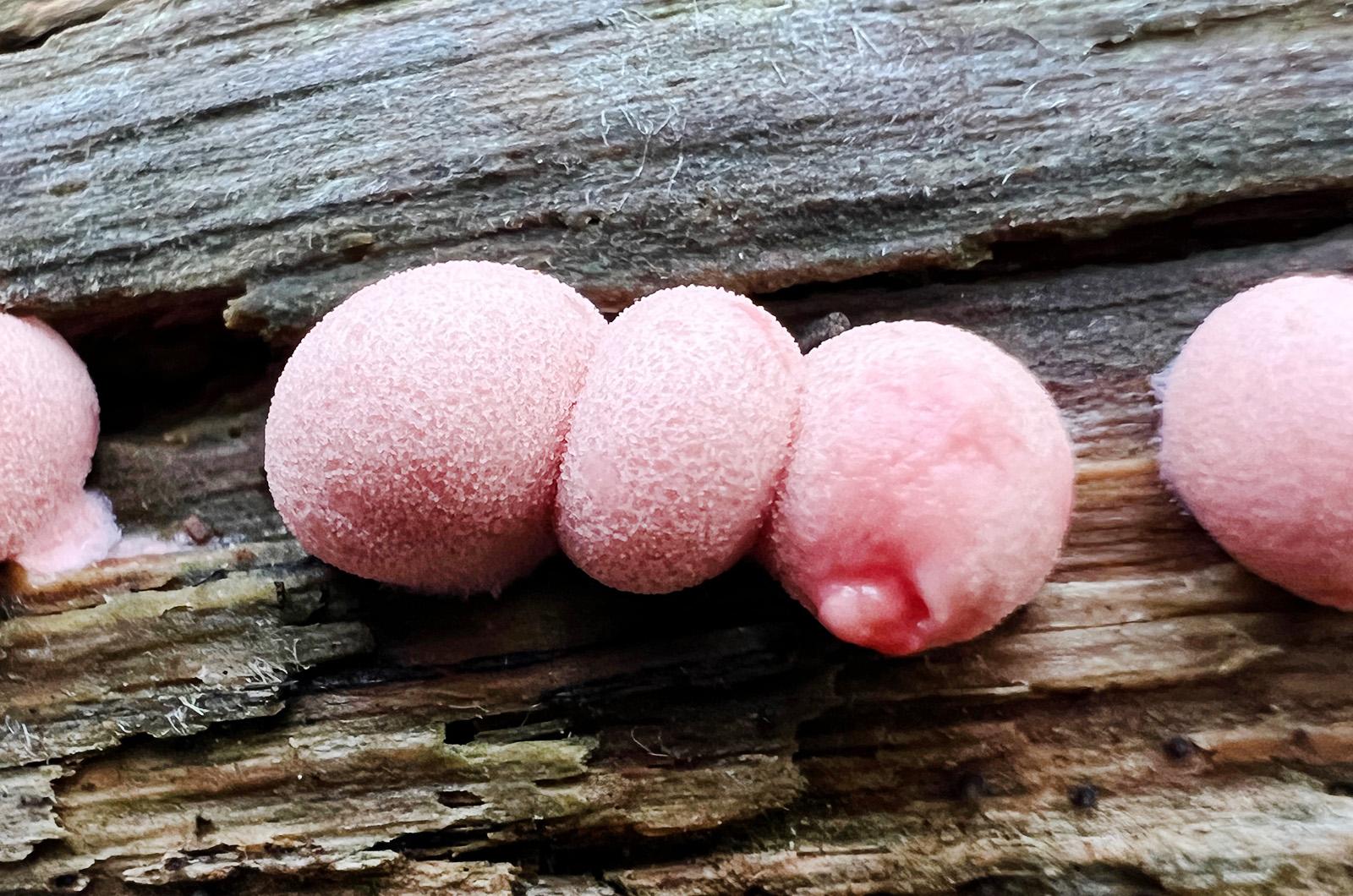Beware (and behold) the Blob.
For those that remember, the Blob was a 1958 film starring Steve McQueen, in which an amoebic alien takes over a town. The Blob moves and grows by enveloping and consuming everything in its path.
Purportedly this was a fictitious account. However, I can tell you that the blob is real and is somewhat conspicuously spreading itself all over our Island.
The real blob is a slime mold, an organism that is plentiful and on the move here — and, in fact, all over the world. Slime molds are a cosmopolitan species, meaning that they can tolerate a wide variety of conditions and are found planet-wide.
David Stanwood of West Tisbury recently got in touch to describe a “red amoeba-like organism” he observed and photographed on a log in the woods at the Tisbury Water Works.
You could say he got slimed, since the organism in question was a slime mold. The particular variety is called Wolf’s Milk Slime, Toothpaste Slime or Groening’s Slime. I so wanted this funky-looking slime to be named after Matt Groening, who is the cartoonist and creator of the Simpsons (appropriate, right?), but all I could find was a sand crab named in that Groening’s honor and no other notable Groenings to associate with the organism in question.
This blob’s scientific name is Lycogala epidendrum, translated to “wolf milk on wood,” and this species was the first slime mold described in the mid-1600, but erroneously believed to be a fungus.
Slime molds are not fungi, even if they appear as such. Nor are they considered plants or animals. Instead, slime molds are categorized as protists and are curiously difficult to classify as they have animal, plant and fungal characteristics. Consider the dual life cycle of Wolf’s Milk.
This beast is a one-celled amoeba, also called a plasmodia, that creeps on dead plant material, consuming and digesting foodstuffs such as bacteria, yeasts, and fungi as it goes. At this stage, each cell moves individually unseen, and generally unobserved by humans due to its unnoticeable single-celled size. When ready, this single cell will come together with other single-celled plasmodia by emitting chemical substances called acrasins that serve as mutual attractants. Even with only one cell and without a brain, each plasmodia can somehow communicate.
With some more slime mold magic, singles form an observable colonial organism working collectively for reproduction. These many unions somehow create a sporangium, a receptacle to hold spores which appear as a bunch of balls (a lot like puffballs) that will allow for slime mold procreation.
These protist puffballs are the fruiting bodies called aethalia and are the reproductive stage that David observed. Initially, they are pink or reddish but will become brown or gray as they age. In the beginning, these balls are filled with thick pink paste (thus the name toothpaste slime). Once ripe, the contents of those aethalia are dry, dusty spores that will be distributed to eventually start the cycle again.
These slithering slimers have my admiration. We could learn a lot from their simple selves about cooperation, communication and survival — all lessons we may need to persist in an ever-changing environment. Mario Cuomo had a similarly optimistic view, when he said: “I am one who believes that the world goes from the slime to the sublime.”
Suzan Bellincampi is director of the Felix Neck Wildlife Sanctuary in Edgartown, and author of Martha’s Vineyard: A Field Guide to Island Nature and The Nature of Martha’s Vineyard.







Comments
Comment policy »